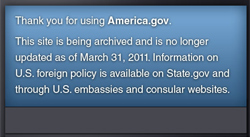 UPDATE: About 45 minutes after posting this article, I (like a million other people around the world) learned via Twitter that Osama bin Laden had been killed. That was about 45 minutes ahead of President Obama’s official announcement. Compare The New York Times’ writeup on how the news leaked out with Australian Broadcasting Corp’s Storify version to get a feel for the curation tool’s ability to provide context in an entertaining way and help readers make sense out of a social media information flood.
UPDATE: About 45 minutes after posting this article, I (like a million other people around the world) learned via Twitter that Osama bin Laden had been killed. That was about 45 minutes ahead of President Obama’s official announcement. Compare The New York Times’ writeup on how the news leaked out with Australian Broadcasting Corp’s Storify version to get a feel for the curation tool’s ability to provide context in an entertaining way and help readers make sense out of a social media information flood.
My May 2011 video clip of the month is a demo of Storify, a new online tool to turn what people post on social media into compelling stories. With Storify, you drag and drop the best content from Twitter, Flickr, Facebook, YouTube, and other social media sites to make a single, dynamic narrative that you can embed almost anywhere.
Storify, which opened to the public this week after months of limited availability during a private beta period, solves a problem facing all social media users today. Information overload? No. In the words of technologist Clay Shirkey: “There is no such thing as information overload, there’s only filter failure.” Storify is filter success.
The tool is ideal for live-blogging during significant events to help your readers make sense out of the avalanche of information. Here are some examples of Storify in action:
- The royal wedding 2011
- April 27, 2011, Cullman, Alabama tornado
- Japan earthquake and tsunami
- Egyptian protests escalate
- Jasmine revolution in Tunisia
For now, Storify remains a free service, but its founders are considering charging for advertising and the use of the site by brands. Levi’s and Samsung, for example, have already used it for marketing campaigns.
You can check out Storify in the video below. If you’re still wanting more, view this 20-minute interview of its founders, the runner up for video clip of the month.
What do you think about Storify? Is it a friend of journalism? Or does it pose a threat? Share your thoughts in the comments section.




